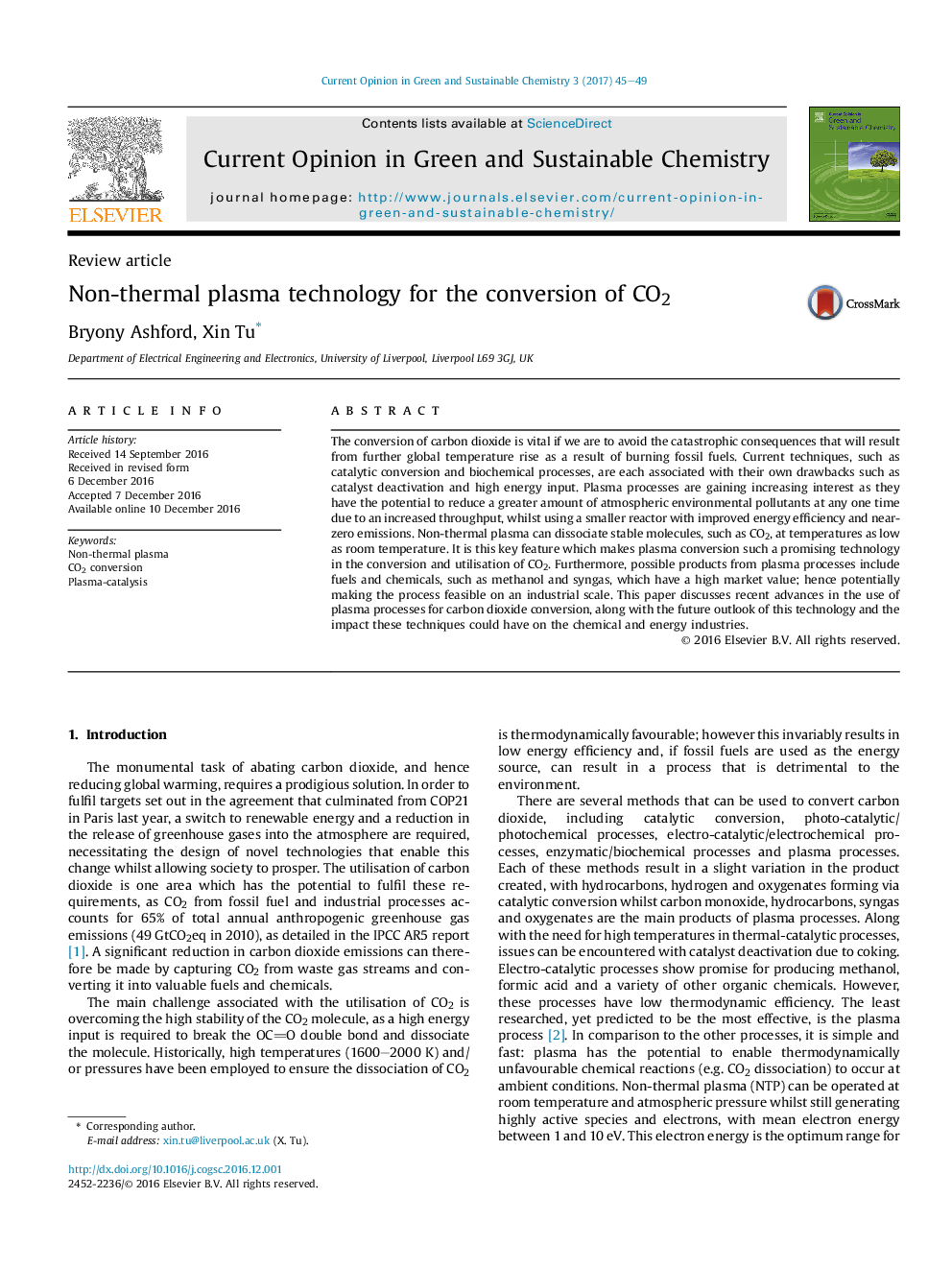| Article ID | Journal | Published Year | Pages | File Type |
|---|---|---|---|---|
| 5143448 | Current Opinion in Green and Sustainable Chemistry | 2017 | 5 Pages |
Abstract
The conversion of carbon dioxide is vital if we are to avoid the catastrophic consequences that will result from further global temperature rise as a result of burning fossil fuels. Current techniques, such as catalytic conversion and biochemical processes, are each associated with their own drawbacks such as catalyst deactivation and high energy input. Plasma processes are gaining increasing interest as they have the potential to reduce a greater amount of atmospheric environmental pollutants at any one time due to an increased throughput, whilst using a smaller reactor with improved energy efficiency and near-zero emissions. Non-thermal plasma can dissociate stable molecules, such as CO2, at temperatures as low as room temperature. It is this key feature which makes plasma conversion such a promising technology in the conversion and utilisation of CO2. Furthermore, possible products from plasma processes include fuels and chemicals, such as methanol and syngas, which have a high market value; hence potentially making the process feasible on an industrial scale. This paper discusses recent advances in the use of plasma processes for carbon dioxide conversion, along with the future outlook of this technology and the impact these techniques could have on the chemical and energy industries.
Related Topics
Physical Sciences and Engineering
Chemical Engineering
Catalysis
Authors
Bryony Ashford, Xin Tu,
